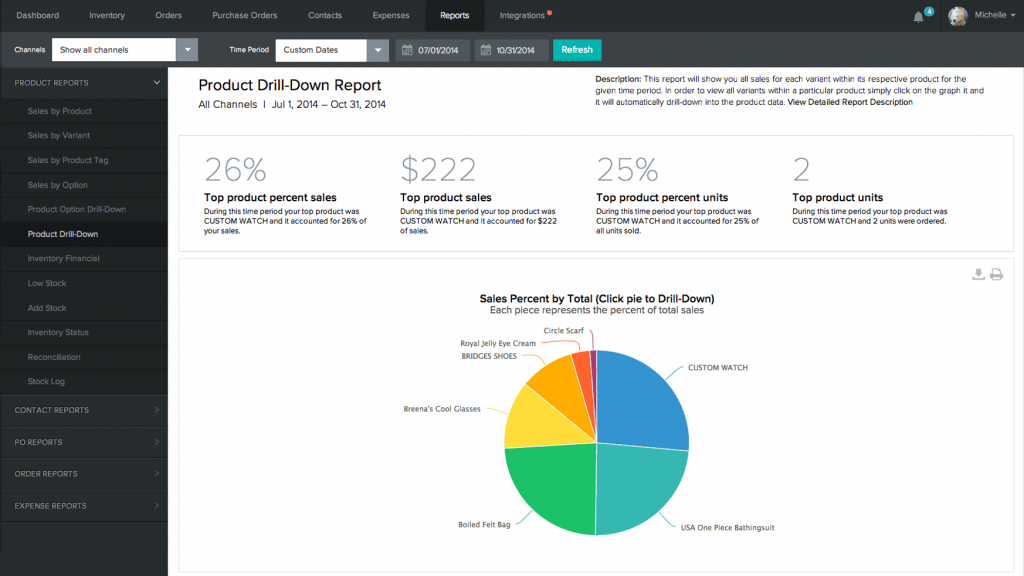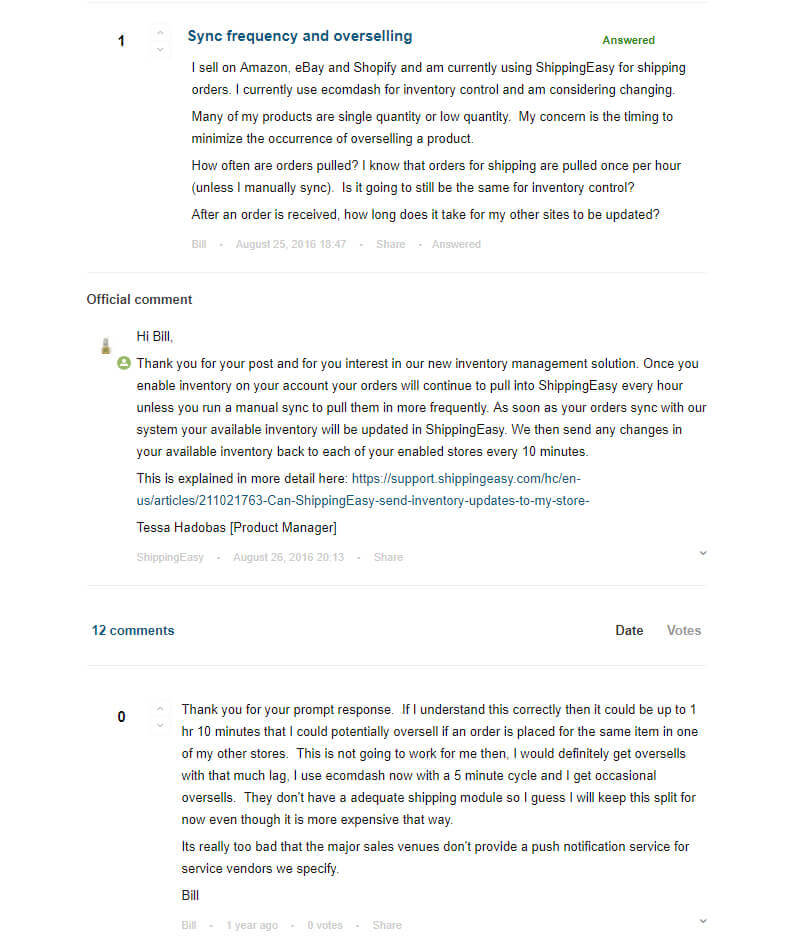I’ve started this blog to help you avoid all the mistakes I’ve made all the way up to building our 5 million dollar / year online business and have over time written a lot about the different operational challenges I had to solve (managing customer service efficiently, saving time with bulk listing etc.) and in this post I’ll share everything I learned about synchronizing your stock across multiple sales channels to maximize your inventory exposure while avoiding the risk of overselling

The Challenge: Managing Multi-channel Sales Efficiently
Let me start by giving you a real life example of a seller who has 10 laptop devices in stock. He sells on three platforms:
- eBay
- Amazon
- His own webstore
Without auto stock sync he has to allocate:
- eBay – 5 devices
- Amazon – 2 devices
- His own webstore – 3 devices
Now if this seller did have automated stock sync he would be able to show 10 on all 3 channels and everytime a sale is generated all his channels would automatically sync and show 9 products in stock – in this way the seller can maximize sales without running the risk of overselling.
Having and managing multi-channel sales used to be a problem that only large multinational companies had to deal with and even many of these companies relied on the two main sources of modern commerce:
- bricks and mortar stores
- online retail

Those were the good old days when retail was straightforward – these days it’s all about hybrid and multi-channel, competition is fierce and your customers are everywhere from marketplaces to social media. And it’s not just big corporations who are trying to keep up but individuals who are running their own ecommerce businesses.
Today retailers have this mental pressure to be everywhere because ecommerce has expanded from eBay and Amazon to other marketplaces (walmart, aliexpress, buy.com…). Sellers want to connect with potential shoppers wherever they are. Ecommerce is also extending itself to social media on platforms the likes of facebook and instagram so the pressure on sellers is overwhelming. It’s hard enough to sell on a single channel let alone multiple channels which are very different from one another – this can seem nightmarish for small sellers.

4 Figures to consider
- 29% of retailers don’t have multi-channel visibility in order to provide reliable fulfillment promises.
This means that certain retailers sell on multiple channels but they lack the ability to know how much of their product they have in stock across the board so that a situation can arise where a customer orders an item which is displayed as in stock but in reality is out of stock.
For example retailers selling shoes online may show on eBay and Shopify that they still have 5 leather boots in stock when in real time they have sold these remaining items at their physical locations. To restock they must order a new shipment from China and this can take 30 days. This will obviously result in a very unhappy customer who will receive is item in a month’s times instead of four days as promised. - $1.1 trillion in yearly revenue is lost due to over or out-of-stock issues
- $222.7 billion is lost a year due to a lack of sharing inventory data. If we continue using the shoe retail example, the customer who ordered a pair of leather boots on eBay with a four day fulfillment guarantee is most like not going to wait 34 days (30 days till it arrives from China + the 4 days of shipping and handling). He will cancel his order and give the retailer a bad review thus causing them a. Losing business now and losing potential future transactions.
- 43% of retailers still rely on pen and paper or spreadsheets for manual inventory tracking
3 Questions you may be asking yourself
- But how do I manage my multi-channel inventory when selling across the board without falling short ?
- Is automatic stock synchronization a must in order to beat the competition ?
- And what are the best practices for businesses who are trying to keep up?

Good Inventory Management = Profitability
As I illustrated above retail is more complex but what you may have not known is that the better you manage your inventory the more profitable you can be as a business.
How do I figure this ?
- First and foremost, stock sync allows you to expose ALL of your inventory on ALL your sales channels thereby allowing you to maximize sales potential.
- Managing inventory correctly can help lower the price of your product and increase how quickly you can deliver it. The reasoning behind this is if you are out of stock you may panic and buy your missing products from a more expensive supplier or manufacturer but if everything is synced you can calmly source well priced suppliers and keep your prices level. In terms of speed – if your product is in stock you can deliver it quickly and if not then it will take you time to source it.
- Following this logic, when you deliver items quickly and efficiently your customer satisfaction goes up and this turns them into repeat customers and motivates them to recommend your product to friends. And again, the reasoning is that when your stock is synced you are able to deliver products in a timely fashion since you only offer what is available.
- Not properly keeping track of inventory can lead to demand outpacing supply which may cause you to up your prices or you buying from more expensive suppliers in order to meet demand – either scenario is bad for business and hurts your bottom line

The Answer: Cloud-based Multi-channel Inventory Management Solutions
These platforms allow you to track your inventory 24/7 across multiple sales channels so that you are constantly in the know about:
- What’s in stock
- What has been dispatched
- And when you need to place your next orders from suppliers
The most important point is that this system allows you to expose ALL of your stock. You can go to sleep rest assured that the system is taking care of the stock sync so you won’t oversell your product while you are away from your computer.
Consider using solutions like StichLabs, Tradgecko or Zoho which offer multi-channel sales management in real time. These types of companies help:
- Expand your multi-channel sales by syncing inventory
- Provide you with multi-channel inventory synchronization
- Improve operational efficiency by reducing errors and redundancies
- Provide you with low stock alerts helping you maintain inventory levels
- Automating ordering and fulfillment processes

Make sure you are not overselling and never out of stock
On the one hand, no seller wants to have products lying around but on the other hand, you never want to be caught with your pants down or in other words: out of stock.
It is hard to predict the demand of each item and storing large amounts of products is costly. That is why more often than not, multi-channel sellers keep less stock on hand and list more products than they actually have for example:
- 10 units on Amazon
- 10 on eBay
- And 5 on shopify
but in reality they only have 15 units – here is where they run the risk of overselling. Multi-channel inventory management solutions notify you when you are running low while collecting data from previous sales periods – for example if a certain product was hot last Christmas, the platform will help remind and coordinate pre-orders come December.
Keep your products geographically close to your customer
When selling on multiple sites and locations you, like all sellers want to get rid of merchandise asap – merchandise is the hot potato that nobody wants to hold as everyday it sits in your warehouse it costs you money.
That is why I recommend you try and keep track of where your largest customer base is, say Japan and try and have a storage location there or even better a local dropshipper. Supply chain optimization is key to success when retailing on multiple channels.
That is the same approach that led us to opening our UK based company. Back in 2013 we noticed that most of our sales where going to the UK, specifically to London. We started wondering why that was. We were selling film making equipment and after doing some research we found that the UK is one of the biggest markets in this field. We decided that in order to provide excellent buying experience (which includes fast shipping times and local support) we had to keep some small amount of our best sellers in London, so we set up a small office with our fastest movers there. With time we increased the space and added a showroom, this move paid off and helped us grow the business significantly.
Important and Valuable Inventory Syncing Features
How the sync process works
Inventory syncing platforms generally update available quantities of inventory across all platforms every few minutes and in some cases in real time . Let me lay out how the process works:
- You enter the quantity currently on hand of any or all items you are selling and link all your items to the listings on the various platforms:
- Orders are placed on whatever channels you are selling on such as eBay or Shopify and are ‘imported’ to your sync platform allowing your inventory quantities to be adjusted automatically. Remember that you can always adjust quantities manually for whatever reason necessary such as selling offline for instance.
- Once your sync platform recalculates your inventory based on sales it automatically updates this information on your linked listings.
Inventory Rules
This is a fantastic feature which allows you to decide how much stock to show and on which channels. An example of why a seller would want to use this is someone who has a unique product and is the exclusive distributor. By limiting the number of products displayed he can keep prices high and release inventory at key intervals such as holiday or peak seasons. A very useful feature is that a seller can choose to display a minimum or maximum amount of products to potential customers on different retail channels – I will go into detail about how one can use this to his advantage below.
Another example is a seller who also owns a store and wished to retain some of his merchandise for his bricks and mortar operations.
Here is an example of how one could set inventory rules for a specific channel, in this case eBay:
Many inventory sync platforms allow you to play with this in a number of ways :
- Percentage of inventory – This option allows you to only show a percentage of your merchandise available. For example maybe you have 100 iphones but since you know you will sell 50 to friends and family you only want to show 50% of your inventory and so someone shopping on eBay or Alibaba will see that you only have 50 in stock and not 100.
- Maximum quantity – This is a great feature which allows you to add a maximum quantity to be displayed on a specific platform, for example, say you want to increase the rarity of an item so you only show shoppers on shopify 2% of your inventory ie 2 iphones (2/100).
- Minimum quantity – This function means that you can decide to show shoppers on all your channels that you have a minimum amount of product in stock, say 1 item even if your inventory is at zero. This is great if you don’t want to deter people from buying if you are out of inventory but should make sure that you have quick access to more product in order to meet demand.
Syncing frequency
It is important to keep in mind that different solutions offer different sync times, some take hours and some seconds. If you sell high velocity items – you need your system of choice to sync fast! Sometimes even a five minute delay can result in overselling a product and especially on eBay this can be catastrophic in terms of your seller ratings.
Sellers who choose the wrong sync platform for the speed and quantity that they deal with on a regular basis will ultimately pay a heavy price in terms of negative buyer feedback if you need to delay shipment due to lack of inventory synchronization.
Here is a prime example of a seller searching for a more efficient inventory synchronization platform – every minute is important to him as he does not want to risk overselling his merchandise:

Final thought
As an eCommerce business owner I often got upset when I needed to add more and more softwares to run my business efficiently but the reality is that as you grow the complexity grows. You reach to a certain stage where you cannot manage everything with excel sheets, this is where solutions like automatic inventory sync come in and In order to scale your business you must integrate these solutions to your workflow, it will be worth every penny in the long term.
One way to manage this complexity is to choose all-in-one type of softwares although I couldn’t recommend on one that I honestly like (CrazyLister is still not entirely all-in-one, although stock sync will be available very soon).
If you have any recommendations, feel free to share in the comments below.




